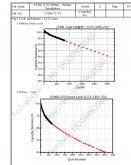Those cells are made by a big player in china and should be OK.
Jiangxi Ganfeng battery technology co., LTD. is the first listed company in the lithium industry in China, specializing in the research and development, production and operation of new lithium ion batteries, the main products are lithium iron phosphate battery core, power battery pack, battery...
www.ganfengbattery.com
Make sure they never go under 2.5V though as they fail dramatically if you do let them drop . Notice the terminal you show has aluminium at its bottom . Look at the other terminal which is black is also aluminium but it has copper at its base. The black will test out to be positive and the fawn negative.
Use stainless bolts with a nut and washer . Put nut then washer on bolt screw nut up as far as it will go ,put bolt through the connector and thread into terminal hand tight . Ensure a one or two millimeter gap below the bottom of the bolt. Tighten nut down on washer and connector . A bit elaborate I know but if the bolt is tightened too far down it can pierce the bottom and ruin the cell.
The fluid you hear inside is the electolyte /coolant.If you pierce the cell it can leak or evaporate .
I studied those cells at Uni recently.




